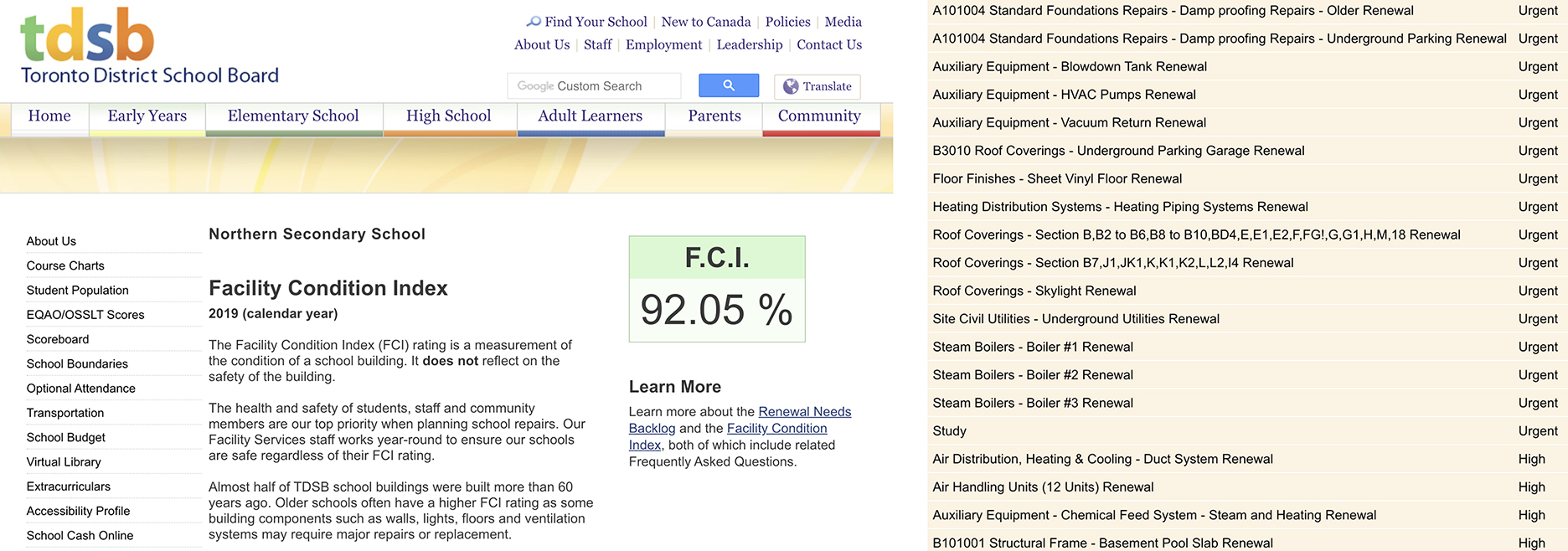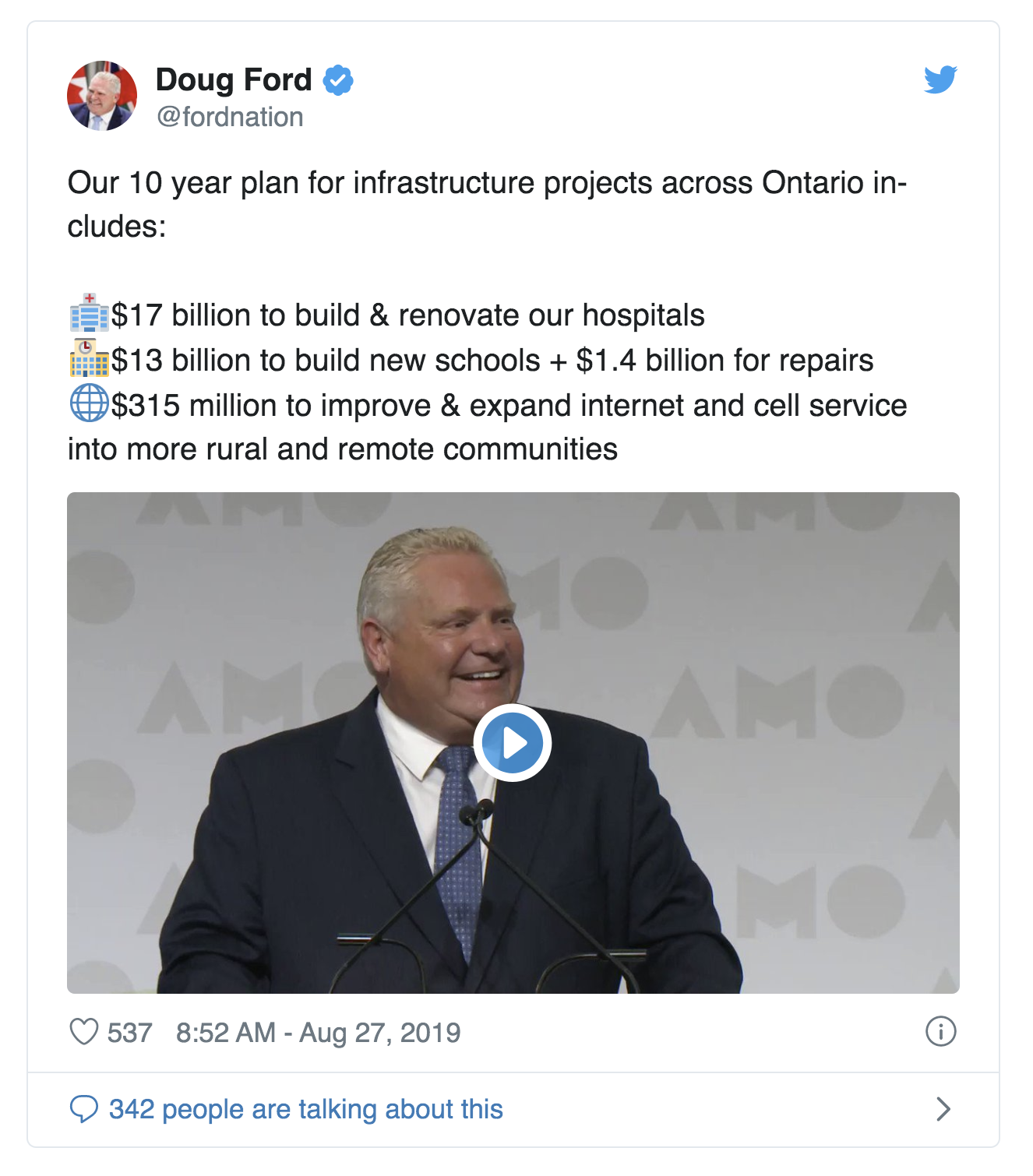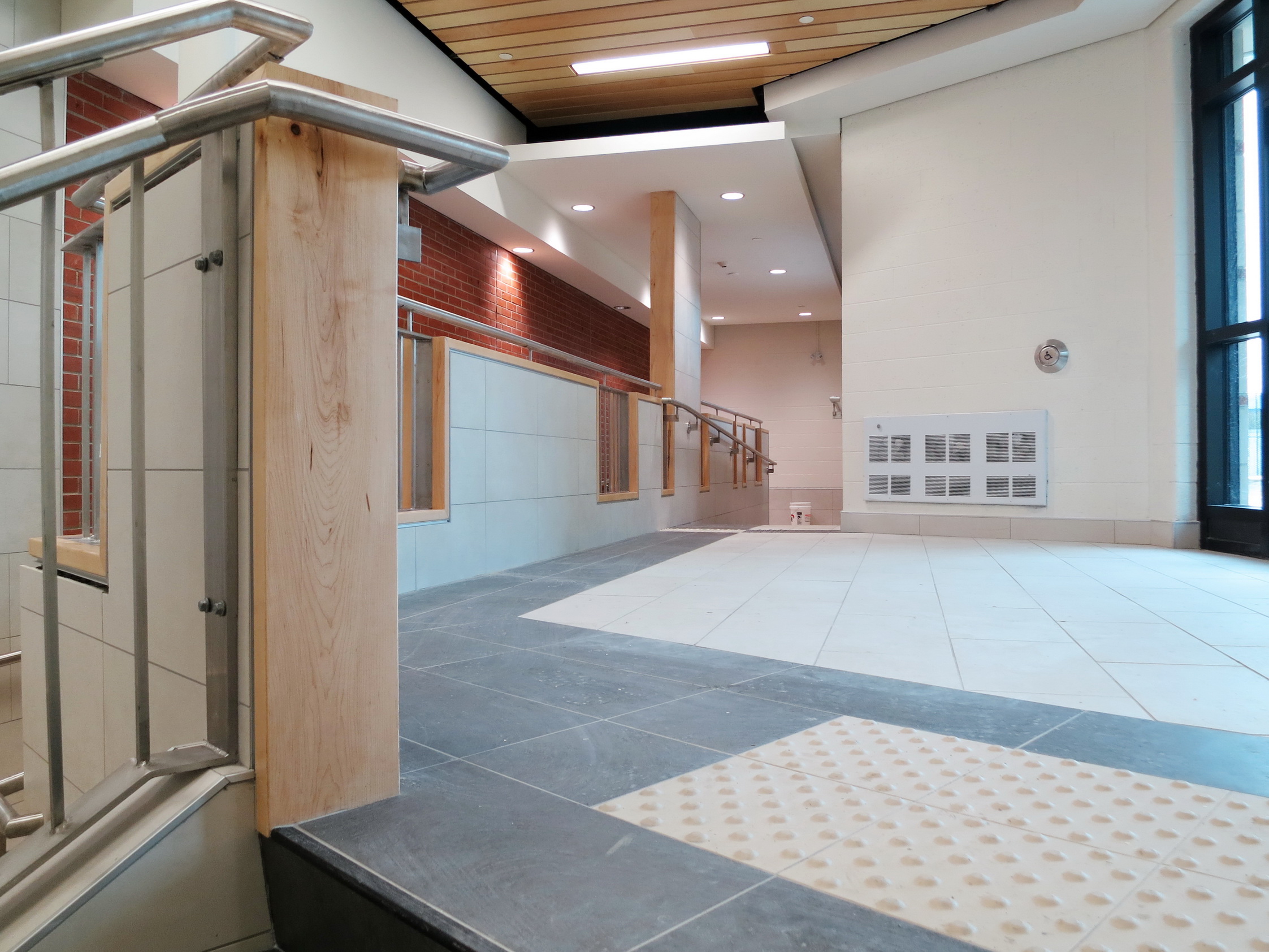‘Tis the season for reflecting on the year that is now drawing to a close. In that spirit, we’ve been considering how our provincial government has done in 2019 relative to achieving the vision of the Fix Our Schools campaign. Namely, what has our provincial government been doing in 2019 that would ensure that all of Ontario’s publicly funded schools are safe, healthy, well-maintained buildings that provide environments conducive to learning?
The Good
- Doug Ford’s first provincial budget maintained the $1.4-billion/year funding for school repairs and renewal via SCI and SRA funding. As per industry standards and Ontario’s Auditor-General, the absolute minimum yearly funding to keep Ontario’s schools in a state of good repair is $1.4-billion. With $16.3-billion of disrepair assessed, Ontario’s schools are clearly not in a state of good repair. So, while Fix Our Schools was pleased to see the Ford government maintain the $1.4-billion/year funding level, we continue to advocate for the additional funding required to quickly eliminate the $16.3-billion of disrepair in Ontario’s schools.
The Bad
- Our provincial government has not approved any new schools to be built since before the provincial election in June 2018. In essence, we’ve lost over a year in the process of getting new schools approved and built in this province, which is an absolute shame. Minister Stephen Lecce announced back in July that his Ministry was finally resuming the process but we are still waiting to hear about new schools being approved and built.
- The Ministry of Education has not updated school disrepair data in over two years, with the last publicly released data being issued in October 2017. At that time, disrepair in Ontario’s publicly funded schools was $15.9-billion. As of October 2019, the TDSB updated the disrepair information for all of its schools but the Ministry still has not publicly updated its date. As of November 2019, the total disrepair in Ontario’s schools was confirmed by the Ministry to have increased to $16.3-billion but the Ministry still has not publicly updated the full data set of disrepair in all of Ontario’s schools.
- Developers continue to be able to profit from building near “good schools” and yet not be obligated to pay one single dime towards this public infrastructure that contributes to the success and profitability of their developments. While the Ministry of Education did propose some revisions to the Education Development Charges regulations in 2019, Fix Our Schools was disappointed that these proposed changes did nothing to ensure that developers contribute financially to the school infrastructure in neighbourhoods where they choose to build.
Toronto board wants to use developer levies to fix aging schools.
FOS believes that EDC's are a viable funding source for @TDSB 's $3.7 Million repair backlog. https://t.co/CEIdslJKnP @torontostar— Fix Our Schools (@Fix_Our_Schools) February 25, 2018
- Despite the fact that 58 MPPs in this province signed the Fix Our Schools Pledge during the provincial election, committing to developing a standard of good repair for our schools and to allocating the required funding to achieve these standards, we’ve heard nothing about this topic even being considered as yet. School conditions are important. Research clearly demonstrates that they impact student learning, achievement, health and attendance. With $16.3-billion of disrepair, Ontario’s schools are not providing appropriate learning conditions for many students. Without a standard in place, this will not change. Ontario’s students deserve better and we must work towards developing and implementing a standard of good repair for our publicly funded schools.
The Confusing
- Education Minister Lecce’s numbers don’t add up. This July press release indicates that the provincial government is investing $13-billion in capital grants for schools and that this funding will build new schools and help existing schools replace aging heating or air conditioning systems, repair roofs and windows, and install important accessibility features like elevators and ramps. However, $13-billion over 10 years – even if this investment was only for repairs and renewal – is a cut of $1-billion in SCI and SRA funding over 10 years. However, Doug Ford’s tweet in August seems to indicate that this goverment is going to commit $13-billion to building new schools in the coming 10 years and, on top of that, will commit to $1.4-billion/year for repairs and renewal. We’re confused!




